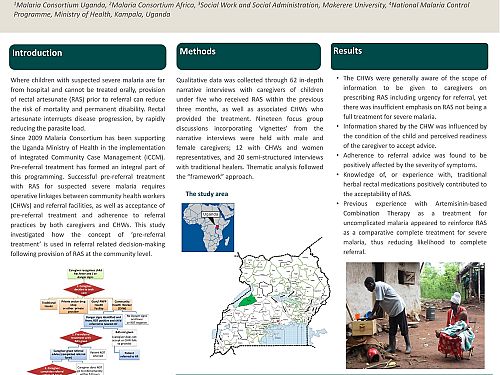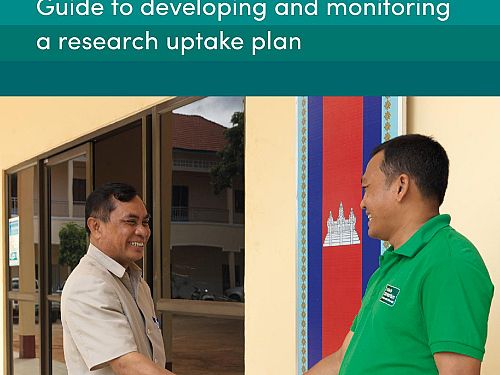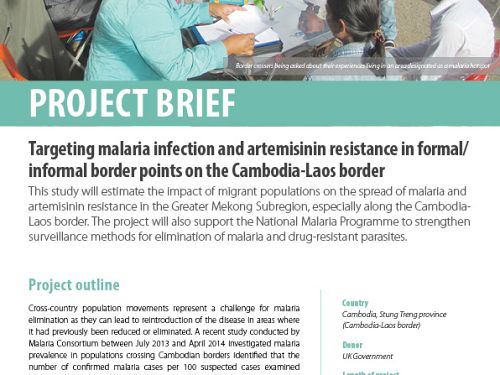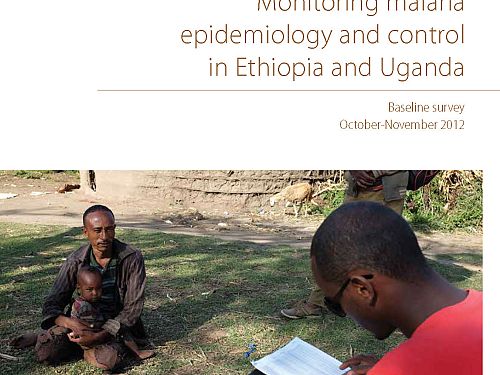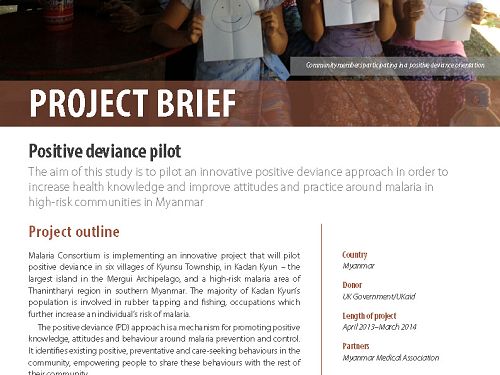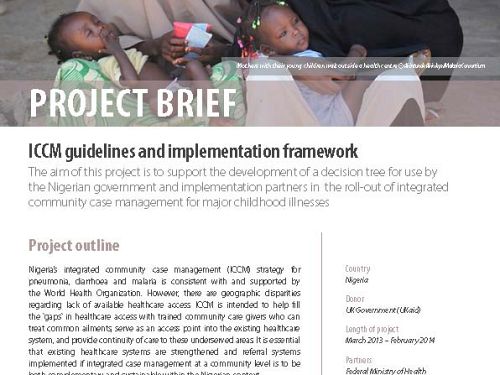Variations in pyrethroid resistance in relation to the use of insecticides in Uganda
Background
Insecticide resistance of malaria vectors is widespread in Africa. The problem may be attributed to increased selection pressure from the scale up of long-lasting insecticidal nets (LLINs) and indoor residual spraying (IRS), alongside the use of similar classes of insecticides for agricultural practices, although the relative contribution of these mechanisms vary by area.
Although pyrethroid resistance is now commonly observed, the impact of this resistance on the effectiveness of LLINs is less well understood. Yet, there is little doubt that the overreliance on one class of insecticides – pyrethroids - will compromise the success of malaria control in the long term. To maintain the effectiveness of current control interventions, managing insecticide resistance is of critical importance. Sound insecticide resistance management is based on the principle that it is best to prevent development of resistance; yet when resistance has already developed, removal of the selection pressure is recommended which is usually accomplished by the rotation of chemicals with a different mode of action. Evidence of a reversal of resistance to a susceptible population following the removal of selection pressure has been observed in some settings, while in others the rate of reversal has been very slow. Because of limited options of LLINs, the global recommendation is to use non-pyrethroid insecticides for IRS in areas where LLINs are common. However, non-pyrethroids belonging to the carbamate and organophosphate classes are much more expensive than pyrethroids, limiting IRS coverage.
Vector control interventions have been scaled up in Uganda since 2006. In the early years of the scale-up, distribution of LLINs was limited to at-risk groups. In later years, universal coverage campaigns took place in selected districts, and in 2013 and 2014 a country-wide universal coverage campaign took place. Similarly, in 2006, the Presidential Malaria Initiative (PMI) started IRS operations in collaboration with the Ministry of Health in selected districts. The operations continued in northern districts until 2014, followed by expansion to other eastern and northern districts while others were dropped. Initially, pyrethroids were used in IRS, but in 2010 a switch to the carbamate bendiocarb was made following the emergence of high levels of pyrethroid resistance in several sites in the country in 2009.
It is important to understand the pattern of resistance in relation to changes in IRS insecticides and the insecticidal pressure from various uses. This study was designed to understand the effect of insecticide use on insecticide resistance and malaria prevalence in Uganda. The specific objectives were to: (1) evaluate the role of using carbamate insecticides for IRS in the management of pyrethroid resistance; (2) evaluate the effectiveness of pyrethroid insecticides in different areas with different historical use of the insecticides and different interventions; and (3) assess the epidemiological impacts of pyrethroid resistance on the effectiveness of LLINs.
The study was conducted in 45 sites in nine districts. The districts in the sampling frame were stratified into three groups before the study districts were selected: Group A districts that had undergone several rounds of IRS and where more than 1.5 LLINs per household had been distributed during 2008-2010; Group B districts where more than 1.5 LLIN per household had been distributed during 2008-2010 but no IRS had taken place; and Group C districts that had not received IRS or LLINs as part of a large campaign. Three districts were selected randomly from each group as follows: Group A: Apac, Gulu and Pader; Group B: Kayunga, Kiboga and Mbale; and Group C: Bugiri, Mayuge and Soroti.
In each district, five sites were selected for the study among health centre IIIs and IVs with long-term morbidity records.
Household surveys were carried out to conduct interviews and collect blood samples, and entomological data on vector density was gathered in communities around the selected health facilities (study sites).
WHO susceptibility tests were carried out to collect on data on resistance levels of vector species, especially against the pyrethroids deltamethrin and permethrin and the carbamate insecticide bendiocarb.
Main findings
- Tests with pyrethroid insecticides showed resistance and suspected resistance in all sites except in Apac where susceptible populations were observed against deltamethrin in all surveyed sites (permethrin was not tested). Deltamethrin resistance was observed in Soroti and Gulu for both An. gambiae s.l. and An. funestus s.l and in Mbale for An. gambiae s.l. In other districts, the vector populations were classified as either suspected resistant or resistant dependent on site, except in Mayuge where only suspected resistance was reported in all surveyed sites. Permethrin resistance was observed in An. gambiae s.l. and An. funestus s.l. in all districts where tests were performed, except in Mayuge where An. gambiae s.l. showed suspected resistance in all sites.
- Bendiocarb resistance was not detected in any of the northern districts where IRS has been ongoing using bendiocarb since 2010. Among the non-IRS districts, resistance against bendiocarb was detected in Soroti and Mbale.
- A regression analysis showed that spray status had statistically significant effect on frequency of kdr L1014S homozygotes. Spraying with bendiocarb caused a significant reduction in kdr homozygosity. The results indicate that bendiocarb spraying may have increased susceptibility of the An. gambiae s.s. populations to pyrethroids by reducing kdr resistant genotypes.
- The study showed that resistance to pyrethroids is widespread in Uganda. Emergence of bendiocarb resistance in some of the unsprayed districts in eastern Uganda is a threat to the IRS programme being introduced to these areas, although no resistance was detected in the sprayed northern districts.
- In the districts with lower historical coverage of ITNs, malaria prevalence and vector density were relatively higher compared to areas with high ITN coverage.

